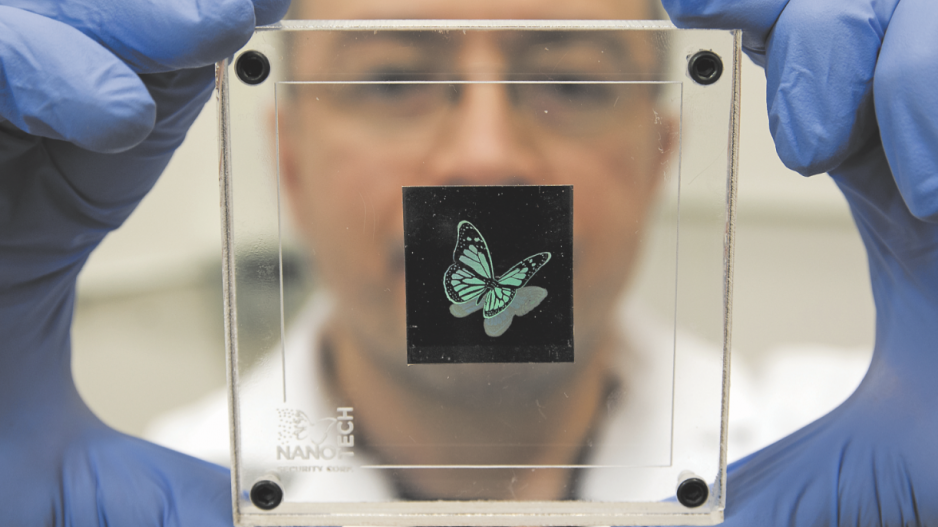For any counterfeiter looking to pass off fake money as legit, Doug Blakeway has a couple of untapped ideas about how to stop them:
Banknotes implanted with nanotechnology, bills printed with pinhead-sized images at maximum resolution or even coins that can store of data.
But it’s not the kind of out-there concepts that only exists in the mind of the CEO of Nanotech Security.
The Burnaby-based banknote security firm has been working non-stop to get these anti-counterfeiting measures onto the streets as quickly as possible and is preparing to ramp up production and sales of its technology after securing $2.6 million in its latest round of fundraising that closed Wednesday (August 26).
“They (investors) see the opportunity or the potential opportunity that’s sitting there,” Blakeway said, adding the original goal was just to raise $2 million but investor enthusiasm was great than Nanotech anticipated.
Nanotech spun off from Simon Fraser University after researchers developed technology that creates images on banknotes as natural light hits a grid of tiny — or nano-sized — holes on the bills.
But most of the $1.4 million in revenue generated during the second quarter came from its colour-shifting optical film division, a legacy technology that has already gained the trust of issuing authorities.
Blakeway said the plan is to converge the nanotechnology and the optical film technology soon. It’s a measure he said is necessary to introduce the nanotechnology to issuing authorities that may be skeptical about the new product.
It probably won’t be until November before Nanotech discloses which countries are using its technology. Issuing authorities, Blakeway said, are reluctant to reveal exactly what measures they’re taking to fight counterfeiting.
“You can talk about the top 10 issuing authorities or the G8 issuing authorities,” he said.
“Without naming them specifically, we’re in discussions with all those.”
But Nanotech isn’t stopping only at imprinting bills with the microscopic holes.
Mints began asking last year if it could transfer its technology onto coins in a stamping operation without any extra cost, save for the dye they use.
Moving forward, the coins will be able to store data through an image that’s carried through light waves.
“We’re going through, fine-tuning and calibrating it so we would have materials that would withstand the coin in production for production over time they would need,” Blakeway said.
“It’s now in our ballpark to make a difference in the dye that we were running and then bring it back for samples for tests.”




